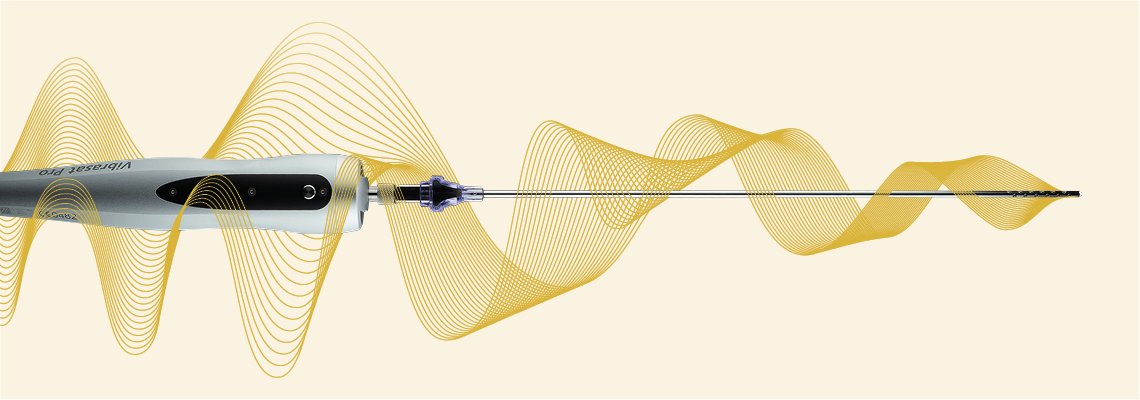
Understanding Lipedema
Nonsurgical vs. Surgical Approaches and the Role of Power-Assisted Liposuction in treating Lipedema
Lipedema is a chronic and progressive disorder of the adipose tissue that mainly affects women. It is characterized by a symmetrical increase of fat in the lower and/or upper limbs, causing pain, swelling, bruising, and disproportion. The exact cause of lipedema is unknown, but hormonal changes and genetic factors are suspected to play a role.2 Lipedema is often misdiagnosed or underdiagnosed, as it can be confused with other conditions such as obesity, lymphedema, or venous insufficiency. Therefore, it is important to raise awareness and educate both, patients and physicians about this condition.
There are two main types of treatment for lipedema: conservative and surgical. Conservative treatment aims to reduce the symptoms and prevent complications, while surgical treatment aims to remove the excess fat tissue permanently. This article compares the main advantages and disadvantages of conservative and surgical approaches in treating lipedema and how the power-assisted liposuction can help patients to a lighter and more pain-free life with lipedema.
Nonsurgical treatment
Manual lymphatic drainage (MLD), intermittent pneumatic compression, compression stockings, exercise, and skincare are commonly employed to manage pain and symptoms. Recent research indicates minimal or negligible edema in cases of lipedema.1 Consequently, treatment with MLD offers little therapeutic benefit for lipedema, except for potential improvements in the patient's overall well-being due to the hands-on nature of MLD. Dietary interventions are frequently employed to prevent or address obesity in lipedema cases. It is crucial for individuals with lipedema to avoid weight gain, as "yo-yo" dieting and obesity have been shown to worsen the condition.
Surgical treatment
Surgical treatment for lipedema involves liposuction, which is the removal of fat tissue using a suction device. Liposuction can reduce the volume and weight of the affected limbs, improve the shape and appearance of the body, and alleviate pain and discomfort. Liposuction can also improve lymphatic function and blood flow in some cases. However, liposuction is not without risks and complications, such as bleeding, infection, scarring, nerve damage, and contour irregularities. Moreover, liposuction does not cure lipedema completely, as some fat cells may remain. Therefore, patients may need to continue with conservative treatment after liposuction to maintain the results.
Power-Assisted Liposuction
Power-assisted liposuction (also known as Vibration-Assisted Liposuction (VAL)) uses high-frequency vibrations to break up and remove stubborn fat deposits and is less invasive than traditional liposuction. When applied to lipedema treatment, power-assisted liposuction offers several advantages:
- Precision: The vibration of the cannula allows the surgeon to work with greater precision, removing fat tissue with more accuracy. This is especially crucial in areas with finer anatomical structures.
- Reduced Physical Exertion: Traditional liposuction can be physically demanding as the surgeon must manually exert pressure to remove the fat tissue. The vibration in PAL eases this process, reducing the physical strain on the surgeon.
- Shorter Operation Time: Due to the efficient removal of fat, the operation time can often be shortened, which is beneficial for both the surgeon and the patient.
- Improved Patient Outcomes: A faster healing process and fewer post-operative complaints can lead to more satisfied patients, which in turn can enhance the reputation of the surgeon.
- Versatility: Power assisted liposuction can be used in various areas of the body, making it a versatile option for surgeons offering a wide range of aesthetics procedures.
- Lower Risk of Irregularities: The technique of power assisted liposuction can help reduce the risk of skin irregularities or dimpling post-surgery, as the fat is removed more uniformly.
A recent prospective study evaluated the outcomes of power-assisted liposuction in 112 patients with lipedema.2 The results showed that power-assisted liposuction was effective in reducing limb volume and pain intensity after six months. Power-assisted liposuction also improved quality of life and mobility in most patients. The authors concluded that power-assisted liposuction is currently the only effective treatment of lipedema.3 Rapprich and colleagues conducted a study on 85 individuals with lipedema who had undergone liposuction with tumescent local anesthesia. This assessment was carried out six months after the treatment. On average, each patient underwent 2.61 treatment sessions. Following the liposuction procedure, the lipedema patients reported significant improvements in various aspects, including reduced spontaneous leg pain, diminished tenderness, decreased bruising and swelling, improved ambulation, and an enhanced overall quality of life.3
Conclusion
Lipedema is a challenging condition that affects many women worldwide. It can cause physical and emotional distress, and impair the quality of life for patients. Conservative treatment can help to manage the symptoms and prevent complications, but it cannot reverse the disease process or restore the normal appearance of the body. Surgical treatment can offer a more definitive solution, as it can remove the excess fat tissue and improve the shape and function of the limbs. However, surgical treatment is not without risks and limitations, and it requires careful patient selection and postoperative care. Power-assisted liposuction is a promising technique that can enhance the safety and efficacy of liposuction for lipedema patients. Faster healing process and fewer post-operative complaints, resulting in improved outcomes and patient satisfaction. Furthermore, power-assisted liposuction also offers significant benefits in terms of time, surgery results, and cost savings for the surgeon.
References:
1: Sandhofer M, et. al. Prevention of Progression of Lipedema with Liposuction using Tumescent Local anesthesia; Results of an International Consensus Conference
2: Rapprich S, et al. Liposuction is an effective long-term therapy for patients with lipedema-results from a cross-sectional study with 25 patients. J Dtsch Dermatol Ges 2017; 15: 1265–1271.
3: Rapprich S, Baum S, Kaak I, Kottmann T, et al. Treatment of lipoedema using liposuction. Phlebologie 2015; 3:1–13.
